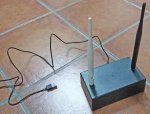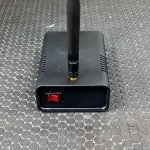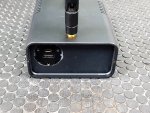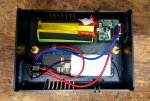Nothing fancy. I followed mostly @volate!lo s recommendations for a steady video link.May I ask what video settings you used in TelloFPV during this test? Thanks!

Nothing fancy. I followed mostly @volate!lo s recommendations for a steady video link.May I ask what video settings you used in TelloFPV during this test? Thanks!

"focused to get decent video over a reasonably stable wifi link"

Will try that. But the main goal is to extend the range in which I can fly with 4mbit bit rate and a steady link.For really long distance use 1Mbit bitrate and 1 sec IFrame interval. That will give you a steady but blurry low detail stream
I've tinkered even more and build a set of antennas.
View attachment 2599
They are called moxon antenna and are directional ( round about 90-120 degrees)
Once again I can't test outside but the inside test are very good.

There are a couple of things you need to take into consideration with your design. I am not trying to criticize your attempts in any way only want to help.
1. You have positioned your antennas with a horizontal polarity. Not sure what the best polarity would be but I think the Tello is vertically polarized. The repeater's antenna is vertically polarized.
2. Your driven element is facing down and the reflector element is reflecting the RF energy down towards the ground not towards the drone.
3. The driven element should point the desired direction (towards the drone) with the reflector behind. The reflector element is placed in such a way so as to redirect the RF energy coming off the driven element going in the undesired direction back froward in the desired direction. This is what gives this antenna gain over a simple dipole antenna.
4. Wood is a terrible sub-straight to use as it is very lossy at 2.4 GHz. A lot of the RF energy is being absorbed and lost in the wood. It will also change the impedance of the antenna away from the desired 50 ohms. Your printed frame should be better. Take your printed holder and place it (plastic only no antenna wire) in the microwave for a couple of minutes. If the plastic gets warm (absorbing energy) it is not a good material to use. If it remains cool would be a great material to use. Free space (no sub-straight) is the best.
View attachment 2729
The illustration shows the a vertical driven element in front of the reflector in a vertical plane. If you rotate the antenna 90 degrees it will then be in a horizontal plane. Both planes should be tested for best signal level.
I believe when measuring the signal strength a lower number is a better stronger signal. Even if you are looking at signal to noise. Lets assume the receivers threshold is somewhere around -100 dBm then a measured signal of -90 would be 10 db above the noise. A signal of -70 dB would be 30 dB above the noise. In any case using the WiFi signal analyzer in your phone will be your best tool for determining actual gain. When making your measurements be sure to rotate the phone 90 degrees and get a measurement in both the horizontal and vertical polarization as we are not sure what plane the antenna in the phone might be.
You may want to experiment with only one antenna as spacing antennas for diversity is another problem all together. You can have 2 perfect antennas placed the wrong distance apart and totally screw up the antenna pattern.
I am looking forward to following your progress.
~Bill


Here is another idea that would be fun to play with. Modify the phone or tablet and bring out the WiFi antenna connection using coax cable. Then connect that cable it to an external 2.4 GHz bi-directional amplifier with antenna. This will increase the control range by a huge amount but the video signal coming back from the bird will not be much better than using a repeater due to the low power transmitter in the Tello. Here is a link to such a device.
EDUP 2.4Ghz 4W Wireless Wifi Power Booster Signal Amplifier Wi-Fi Range Extender 723172893415 | eBay
If one was to modify their phone or tablet and connect it to an external 6 dBi gain antenna it would be as good as using a repeater. The phone or tablet may also have 2 internal antennas for diversity. If this is the case even better. Bring out both antenna connections and use 2 external antennas.






We use essential cookies to make this site work, and optional cookies to enhance your experience.
